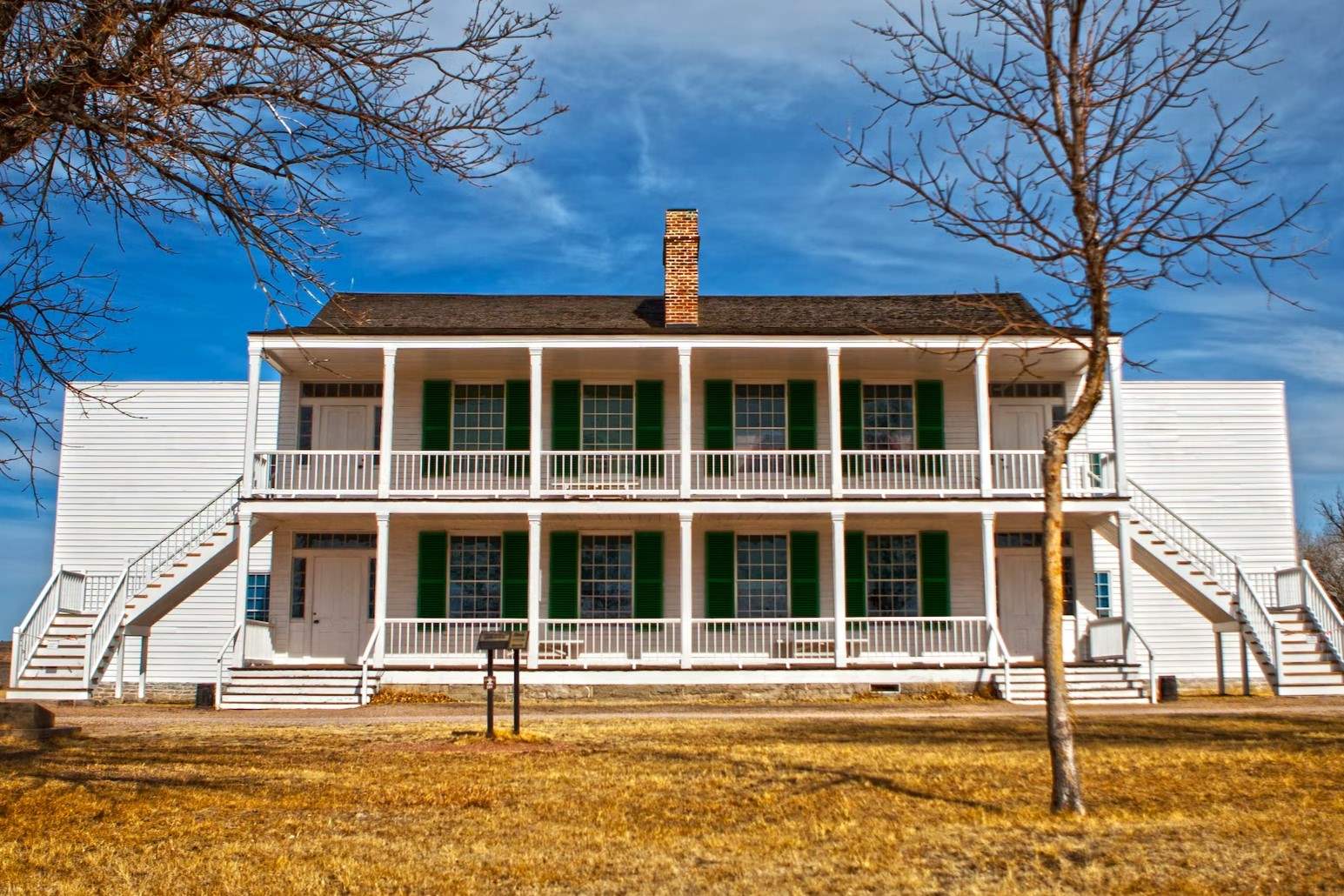Stories Hidden At Fort Laramie Wyoming

Fort Laramie Wyoming is a place where history whispers through the winds. This old military post, once a bustling hub during the westward expansion, holds tales of pioneers, soldiers, and Native American tribes. Imagine walking through a place where treaties were signed, battles were planned, and lives were forever changed. The fort stands as a reminder of the past, with its weathered buildings and open plains. Visitors can step back in time, exploring the barracks, officers' quarters, and the parade ground. Each corner of the fort tells a story, from the daily life of soldiers to the challenges faced by those traveling the Oregon Trail. Whether you're a history buff or just curious, Fort Laramie offers a glimpse into a pivotal time in American history.
Discovering Fort Laramie's Rich History
Fort Laramie, Wyoming, is a place where stories of the past echo through its historic buildings and landscapes. This site, once a bustling military post and trading hub, holds tales of pioneers, soldiers, and Native Americans. Let's uncover some of the hidden stories that make Fort Laramie a fascinating destination.
1. The Old Fort Laramie Bridge
This bridge, built in 1875, is a testament to the engineering feats of the 19th century. It served as a crucial crossing over the Laramie River, connecting the fort to the Oregon Trail. Imagine the countless wagons and travelers who once crossed this bridge, each with their own story and dreams of the West.
2. The Commanding Officer’s Quarters
Step inside the Commanding Officer’s Quarters to glimpse the life of military leaders during the fort's heyday. This building, with its elegant furnishings and decor, hosted many important meetings and social gatherings. Each room whispers secrets of strategic decisions and personal stories of those who lived there.
3. The Cavalry Barracks
The Cavalry Barracks housed soldiers who played a vital role in protecting settlers and maintaining peace. Walking through these quarters, you can almost hear the clatter of boots and the camaraderie among troops. These walls have witnessed tales of bravery, hardship, and the daily life of soldiers on the frontier.
4. The Sutler’s Store
The Sutler’s Store was the heart of commerce at Fort Laramie. Here, soldiers and settlers could purchase goods ranging from food to clothing. This bustling hub was more than just a store; it was a place where stories were exchanged, and news from the outside world was eagerly shared.
5. The Fort Laramie Cemetery
The cemetery is a solemn reminder of the lives that passed through Fort Laramie. Many who rest here were pioneers, soldiers, and Native Americans. Each gravestone tells a story of a life lived on the frontier, some marked by tragedy, others by triumph.
Fort Laramie's Role in Native American History
Fort Laramie was not just a military post; it was a significant site for Native American tribes. The fort played a crucial role in treaties and negotiations, impacting the lives of many indigenous people. Let's delve into some of these important stories.
6. The 1851 Treaty Signing Site
In 1851, Fort Laramie was the site of a significant treaty between the U.S. government and several Native American tribes. This treaty aimed to establish peace and define territories. The site of this signing holds stories of diplomacy, hope, and the complex relationships between cultures.
7. The 1868 Treaty of Fort Laramie
Another pivotal moment in history occurred with the 1868 Treaty of Fort Laramie. This agreement promised the Black Hills to the Lakota Sioux, a promise later broken. The treaty site is a place of reflection on promises made and the struggles faced by Native Americans in preserving their lands and way of life.
8. The Indian Agency
The Indian Agency at Fort Laramie was where government officials interacted with Native American tribes. This building witnessed negotiations, cultural exchanges, and sometimes conflicts. The agency's history is a tapestry of cooperation and tension, reflecting the broader story of Native American relations with settlers.
Fort Laramie's Legacy Today
Fort Laramie stands as a monument to the past, offering visitors a chance to step back in time. Its stories are preserved in the buildings, artifacts, and landscapes that remain. Let's explore how Fort Laramie's legacy continues to captivate those who visit.
9. The Fort Laramie National Historic Site
Today, Fort Laramie is a National Historic Site, preserving its rich history for future generations. Visitors can wander through restored buildings, participate in reenactments, and learn about the fort's role in shaping the American West. Each corner of this site holds a story waiting to be discovered.
10. The Annual Fort Laramie Living History Event
Every year, Fort Laramie hosts a Living History Event, bringing the past to life with reenactments and demonstrations. This event offers a unique opportunity to experience the fort as it once was, with stories of the past told through the actions and words of dedicated volunteers.
Discovering Fort Laramie's Legacy
Fort Laramie, Wyoming, offers a unique glimpse into the past. This historic site, once a bustling hub for pioneers, traders, and soldiers, now stands as a testament to the resilience and determination of those who shaped the American West. Walking through its grounds, visitors can almost hear the echoes of history in the wind. The fort's buildings and artifacts tell stories of hardship, hope, and the blending of cultures. Exploring Fort Laramie provides a deeper understanding of the challenges faced by early settlers and the impact of westward expansion. Whether you're a history buff or just curious, this site offers something for everyone. Its rich history and beautiful surroundings make it a must-visit destination. So, next time you're in Wyoming, take a step back in time and uncover the stories hidden at Fort Laramie.

